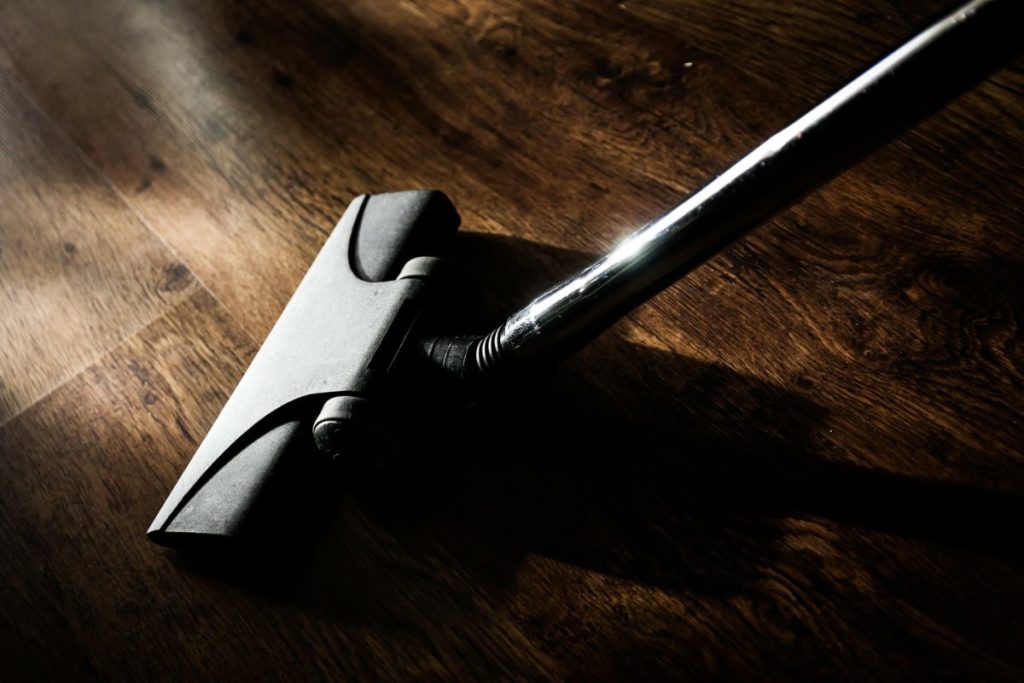Having a set of rattan dining and chairs is a good idea. But over time you’ll notice they attract dust and stains quite often. Especially when the chairs are in the dining room, kids spill juices, milk, and other food that leave stains.
While dust is easy to clean as shown in the video below:
Using powerful pressure washer like Sun Joe SPX3000.
But, cleaning it properly from start to finish including oiling the chair and filling the cracks requires some time and energy.
Knowing how to clean rattan dining chairs is vital and keeps your dining area clean and clear at all times.
To clean rattan dining chairs, you need to have a few things beforehand.
Those important things include:
- Pressure Washer
- Paintbrush
- Soft cloth (or microfiber towel for stains)
- Bucket
- Lukewarm Water
- Toothbrush
- Lacquer
- Boiled Linseed Oil (flaxseed oil)
- Washing Up Liquid
- Handheld vacuum
Do A Quick Vacuum First

Apply vacuum to remove dust particles before you proceed any further. This step ensures you’re not mixing dust and water afterward.
For better results, you can also use a cocktail stick or any other sharp tool to remove soil or debris.
Steps Required To Clean Rattan Dining Chairs
Make a bubbly water solution. Put a soft cloth into the bubbles. Prevent soft cloth to come in contact with the water. You don’t need to soak it for the usual cleaning.
Now, gently wipe your rattan chair. Taking bubbles instead of water is essential as rattan might soak the water and become bloated and ruining the whole presentation of the set.
Use a soft brush to clean the crevasses in the weave.
Note: Make sure you always use foam to clean up rattan instead of water.
How Many Times A Month Should I Clean Rattan?
As rattan is a weave that can attract dust pretty quickly, it’s better to clean it at least once a month.
If you’re living in a dusty area twice a week is much better.
How To Fix Dried Or Cracked Rattan?
A pro hack, in this case, is to use boiled linseed oil (also commonly known as flaxseed oil) and apply gently on to the cracks.
Watch the video below to see the process in action. Though, cane material is shown in the video but the same process is applied to rattan as well.
It’s known to be the best oil for wood and rattan material.
Your goal should be to absorb the oil in cracked rattan as much as possible.
When you finish applying, you’ll notice the rattan will become soft and flexible.
It’s recommended not to use your rattan dining chair and let it remain for about 24 hours until it soaks all the oil and becomes harder again.
What About Stains?
In the case of stains, use a microfiber towel instead. Also, dip the towel in water.
Scrub a little harder with a mixture of water and dish detergent.
Once the stains are gone, you can use a hairdryer to remove the moisture soaked inside the rattan.
Or, let the chair soak direct sunlight or place it in a well-ventilated area.
Once the rattan is dry, do a coat of lacquer for extra protection.
Useful Tips
Use rattan dining chairs inside the house. If in case, they are outside, keep them in. Rattan material expects a cool and dry environment and can remain in good condition even after prolong use.
As with ordinary chairs, rattan chairs also do get bumps all the time. It’s advisable to use rubber stoppers at the bottom of the legs to prevent the beginning of split and cracks.
Use boiled linseed oil. Raw linseed oil doesn’t work well. Get it from here, you don’t have to boil it yourself.
Wrapping It Up
Now you know how to clean rattan dining chairs.
Rattan is durable (especially those which are UV coated), light-weight yet attractive material. It’s the most eco-friendly furniture you can get.
If you want to revamp your rattan chairs completely, use a liquid sander. Take professional assistance for this.
![How To Clean Rattan Dining Chairs [Using 10 Tools]? How To Clean Rattan Dining Chairs](https://whospilled.com/wp-content/uploads/2020/04/How-To-Clean-Rattan-Dining-Chairs.jpg)
![How To Clean Rattan Dining Chairs [Using 10 Tools]?](https://ws-na.amazon-adsystem.com/widgets/q?_encoding=UTF8&ASIN=B00CPGMUXW&Format=_SL160_&ID=AsinImage&MarketPlace=US&ServiceVersion=20070822&WS=1&tag=whospilled-20&language=en_US)
![4 Factors - How Do You Get Rid Of Remodeling Dust? [Keep Your Home Clean] How do you get rid of remodeling dust](https://whospilled.com/wp-content/uploads/2023/01/How-do-you-get-rid-of-remodeling-dust-150x150.jpg)